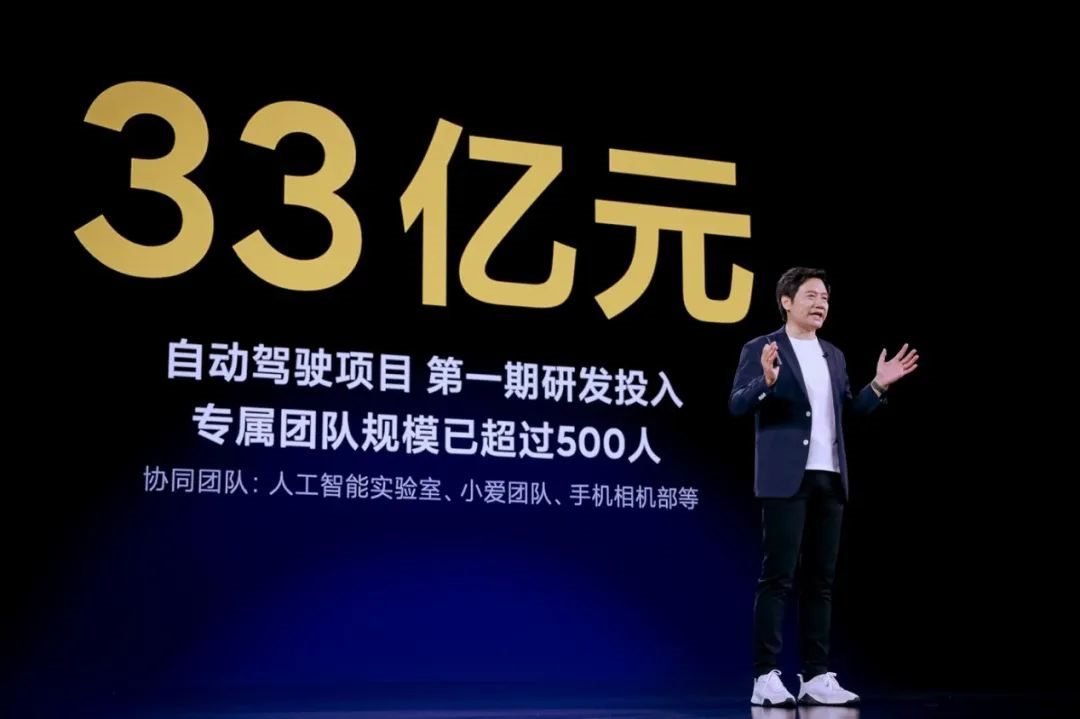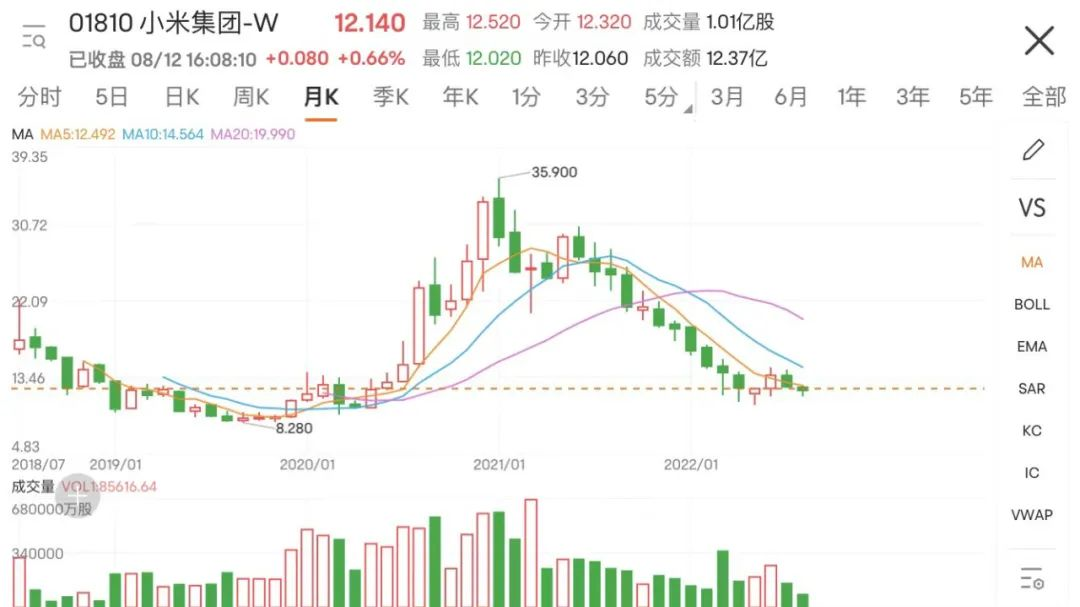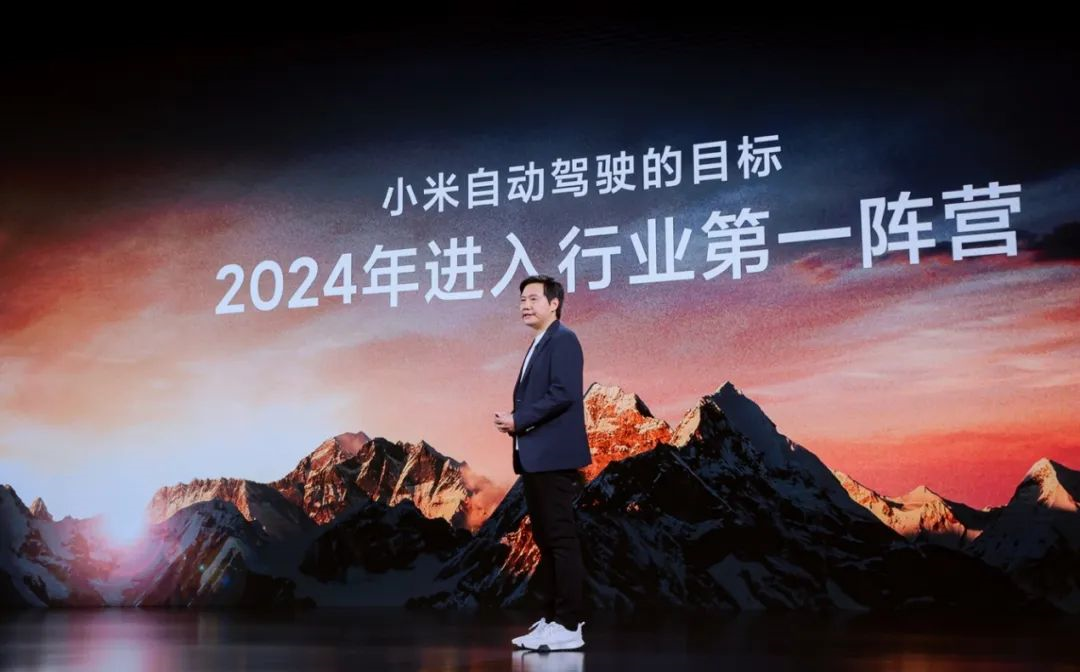Author | Zelin Leng
Editor | Pan Wang
Among the veterans of the Internet industry nowadays, few are often active in the public eye. Even though Zhang Chaoyang, Yu Minhong and others made it to the hot search list not long ago, they still cannot compete with Lei Jun, who has been a “Internet celebrity” for more than a decade.
Last night, Lei Jun made his third appearance on the stage after unlocking the career of “speaker” in 2020.
In a speech lasting 2 hours and 40 minutes, the most concerned Xiaomi automobile only took less than 9 minutes (including a 2 and a half minute video). The small proportion gives people the illusion that the automobile project seems to be at the same level as Xiaomi mobile phones, watches and tablets mentioned earlier.
Lei Jun himself also claimed: “I don’t plan to refute or introduce new developments for the next two years.”
In fact, during the 500 days since Xiaomi announced its car-making plan, except for occasionally being photographed appearing in XX car companies and posting a few irrelevant “encyclopedias” on cars after being a part-time auto blogger, Lei Jun and almost all the senior executives of Xiaomi have kept their lips sealed.
While major car companies are finding ways to “suck” traffic, Xiaomi seems to be doing the opposite.
In this speech, Lei Jun did not reveal more information on automobile R&D progress, but unexpectedly showed off the “muscle” of autonomous driving and claimed that autonomous driving will be the first breakthrough point for Xiaomi automobiles.
And looking back at the development of Xiaomi mobile phones, software-first is Lei Jun’s style.
30,500,140
For autonomous driving, Xiaomi first phase planned an investment of 3.3 billion yuan, a research and development team of more than 500 people, and 140 test cars will be put into testing across the country in the first phase.

What level of investment is 3.3 billion yuan, a team of more than 500 people, and 140 test cars for Xiaomi’s autonomous driving project?
According to the Qichacha (Enterprise Check) data, several autonomous driving companies have disclosed financing amounts of about 1.3 billion yuan for Hemo Zhixing, about $1.1 billion for Xiaoma Zhixing, and about $1.1 billion for Wenyuan Zhixing.
In terms of team size, at the end of last year, XPeng autonomous driving team had a team of about 600-800 people, and Ideal Auto autonomous driving research and development team had about 700+.
In terms of the number of test vehicles, the early data showed that Baidu Apollo had a scale of about 500+, Xiaoma Zhixing had about 200+, and AutoX, which is relatively advanced, has more than 1000 vehicles.
Obviously, the resources of Xiaomi Group and the determination of Lei Jun have provided a good starting point for Xiaomi automobiles.From a technical perspective, Xiaomi’s modified BYD Han self-driving test vehicle has been able to achieve functions such as entering/exiting ramps, high-speed/city navigation driving, and automatic parking in the year and a half since the modification. The details of changing lanes and overtaking, driving around roundabouts, avoiding pedestrians/vehicles, and unprotected U-turns have also had good performance.
However, compared with the demos of many car companies and self-driving enterprises that have already conducted tests in urban villages and high-traffic areas, Xiaomi’s self-driving capabilities do not have any particularly special places.
Considering that the test car is equipped with the Hesai Pandar 128 mechanical lidar (there are rumors of more than one lidar) on top of the car, rather than semi-solid state radar like the Ideal L9 or the NIO ET7, there should be a certain gap between this intelligent driving software and hardware and mass-produced cars.
Generally speaking, the scanning module and laser transmit/receive module in the mechanical lidar can achieve 360° rotation and better detection performance, while the structure is more complex and the volume is larger, so the cost is naturally higher. The semi-solid-state lidar only scans the module for movement, with slightly worse detection performance but a smaller volume, resulting in lower costs.
At present, it seems that Xiaomi’s test car is built on the Robotaxi framework, rather than the route most car companies choose, which is to upgrade from L2 to L4 level autonomous driving. Does this mean that it will involve the Robotaxi field in the future?
There are exceptions to this in the automotive industry. He XPeng has always regarded Lei Jun as the “big brother,” and announced earlier this year that XPeng Motors will soon begin Robotaxi business.
If viewed from this perspective, the autonomous driving ability demonstrated by Xiaomi at present cannot be directly equated with Xiaomi’s own car, but rather is like two lines that do not conflict but can intersect in the future.
Not discussing cars, demonstrating autonomous driving technology at this time may have other implications, such as Lei Jun’s most concerned performance in the capital market.
From the monthly chart, since Xiaomi reached its highest stock price at the beginning of 2021, there have been 14 months of negative gains. Even in the case of a sharp rise in the stock prices of many host factories in May-June this year, the downward trend has still not been stopped.
In last year’s speech, Lei Jun mentioned that when Xiaomi’s stock price plummeted after going public, an investor scolded Xiaomi for more than an hour from strategy to product to management, and Lei Jun even wet his shirt with sweat.
Obviously, for the capital market, autonomous driving is more imaginative than a model that has not yet been mass-produced.
Autonomous driving is virtual, “ordinary answer sheet” is real
Although Lei Jun has set the goal of “entering the first camp of the autonomous driving industry by 2024,” Xiaomi’s first car is likely to only need to submit an ordinary answer sheet.


After all, the more one does, the more likely one is to make mistakes. Consumers will not be forgiving of Xiaomi in the purchase of such high-value items as cars simply because Xiaomi is a “novice”.
As a real estate developer, Evergrande is well aware of this, hence the huge investment in Hengchi 5, which is somewhat conservative in all aspects other than its size and brand.
Similarly, although Huawei has not yet entered the car manufacturing industry, its deeply involved Wanjie M5 has achieved monthly sales of over 7,000 units. While the vehicle’s assisted driving and performance parameters are not outstanding, and even lag behind those of some competitors, it remains a focus of consumer attention due to Huawei’s brand and channel advantage.
If we generalize Huawei’s HI and Smart Mode, both are competing with carmakers by leveraging Huawei’s strengths, such as the MDC computing platform + Lidar + autonomous driving capability and Hongmeng OS + Huawei brand + channel capabilities.
However, compared to Huawei’s ICT, chip, and computing platform experience and the years of accumulated autonomous driving technology under the auspices of Baidu Apollo, Xiaomi’s layout in this area is relatively insufficient, and its released autonomous driving level also has some gaps with its “predecessors”.
Xiaomi’s first car can be equipped with hardware, but it is not required. Because in the current market, where autonomous driving/advanced driver-assistance systems are not yet mainstream, its ability to drive car sales is not strong, but rather it has greater attractiveness to capital.
From Lei Jun to the entire Xiaomi brand’s promotion of Xiaomi cars, it seems that they are trying to keep the volume down to lower consumer expectations.
Recently, mainland group announced that its multi-sensor fusion system with Horizon Journey 3 chip (5 millimeter-wave radars and 1 camera) has received a mass production order from a well-known new car company in China and will be put into production by 2024.
The industry believes that this new force refers to Xiaomi.
Earlier this year, according to the exclusive information provided by “Garage 42,” Xiaomi has planned two car models, one priced between 100,000 and 150,000 yuan (A-class) and the other priced around 60,000 yuan (A0-class).
It’s highly likely that the former will assume part of Xiaomi’s self-developed autonomous driving technology and accumulate experience for the iterative upgrading of autonomous driving capabilities, while the latter will take on the task of capturing the market and generating volume. After all, there may not be many opportunities for Xiaomi to enter the market in 2024, and Xiaomi really needs to take a dual-pronged approach.
This range also conveniently avoids competition with leading new carmakers, and Xiaomi can compete with traditional fuel-powered cars with its influence, user base, and mid-range force, while still retaining the potential for upward extension of the main brand.
According to Lei Jun’s speech, his support for Xiaomi’s car project is symbolic, but his encouragement for Xiaomi Group is substantial.
This article is a translation by ChatGPT of a Chinese report from 42HOW. If you have any questions about it, please email bd@42how.com.
